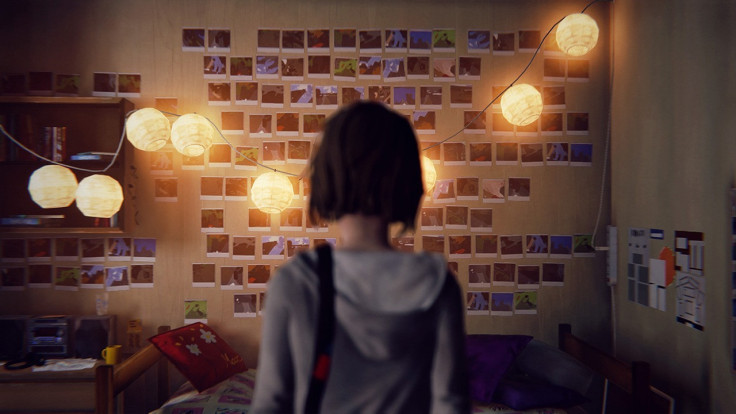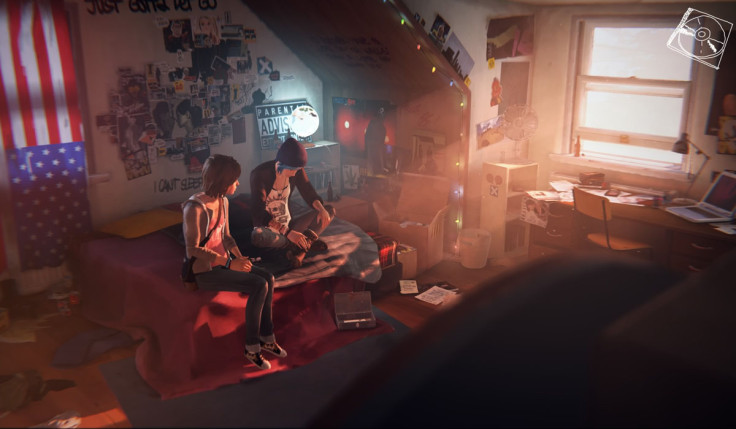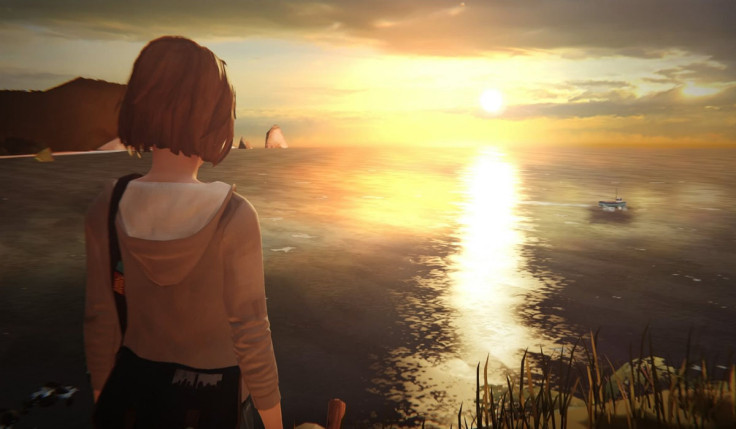Life Is Strange: Episode 1 & 2 review - Teenage kicks

Life Is Strange isn't short on influences, they're worn on its sleeves. French developer Dontnod's inspirations span pop culture, from Gone Home and the style of Telltale Games, to Donnie Darko from the big screen and Twin Peaks from the small.
The result is a game that marries a coming-of-age tale with a supernatural mystery drama – not the most original concept, but one which is pulled off well in these first two of five episodes.
Maxine 'Max' Caulfield, 18, has recently returned to her idyllic US hometown, five years after her family moved her, to study photography at the local school. It's here that Max discovers she possesses the power to manipulate time, starting a story that involves an impending super-storm, a missing girl and a town full of secrets.
Episode one - Chrysalis - opens with Max in a vivid daydream, trudging her way through a battering storm up a woodland hill to a lighthouse. Waking suddenly, Max's remarks at how real the daydream felt, but her day is only going to get weirder. Excusing herself from class she enters the school's bathroom and witnesses a shooting, only to, unbeknownst to her, rewind time and give herself the chance to save the victim's life.
Life Is Strange is rooted in a sense of real, or at least what the developers hope is real and relatable depiction of teenage life. There is a super-natural element but it allows the Dontnod to toy with the interactive narrative structure made popular by Telltale Games, and in particular their first season of The Walking Dead.
Naturally there are choices to make over the course of the story that will impact how things pan out, sometimes in ways you won't know within a single episode. Some are delightfully quaint as well, such as the plant in Max's bedroom which you choose whether to water. Presumably it only withers if you don't, unless there are far great ramifications I can't fathom at this stage, but it's a nice additional element of player agency in the world.

Max's ability allows players to change the choices they make, which may sound like cheating, but with the ramifications never clear you can go back and forth between two actions and still not be sure which is the 'right' one, if indeed one is. While it removes the element of immediate regret that makes some its contemporary's finest moments stand out, so far the scale of the decisions hasn't been so high that rewinding and choosing again feels cheap.
In the climactic scene of episode two the option to rewind is taken away with a fair justification, so the game will wrestle that away from you at crucial moments. This is likely to happen a few more times before the end of the series.
Life Is Strange very obviously adheres to a formula not of Dontnod's own design, but regardless everything is put together well and works with few of the issues that often litter Telltale's games. Some issues do rear their head however, chiefly slowdown when the game loads and moments where the next thing to do isn't hinted at as clearly as it should be.
Dontnod build on the established template too. There is a freedom to the environments rarely found in Telltale's games. There are plenty of characters to interact with and some neat extras like taking set photographs throughout each episode which are collated in the menu.
The basic mechanics are up to the job of supporting what is around it, and what does surround it is where Life Is Strange excels. The design is top notch, a familiar but stylised depiction of a leafy autumnal suburbia that feels cohesive and extends beyond the in-game world into the menus, which are presented as Max's diary.
There are character bios written as diary entries, all with a great sense of personality that helps build Max's character in tandem with what the player does to flesh her out through the decisions and actions. She's a bit of a blank, but she's informed by the good characters around her and her character can't be properly assessed until her story is complete.
The first episode is about setting up the pieces and setting out the themes. We meet Max, her friend Warren who can barely hide his feelings for her, Mr Jefferson, one of those teachers who seems cool to teens but seems sad to adults, Nathan Prescott, a spoilt and near-psychopathic rich kid, Kate, a shy child of religious upbringing embroiled in something untoward and most importantly Chloe, Max's childhood friend who she's been putting off reconnecting with.

There are classic archetypes of the school yard – in particular the classic "school bitch" who Max clashes with – but the first episode's script still manages to get by with enough personality despite this, and a pretty clunky depiction of teenage colloquialism (particularly the word 'hella'). It's in the second episode – Out Of Time – that everything picks up significantly as the impetus is put on the rekindling of Max and Chloe's friendship.
Bringing to mind The Last Of Us's incredible Left Behind DLC, episode two focuses on two teenage girls, their troubles and their bond – told with good voice acting, simple acts within the gameplay and all weaving nicely into the larger story with a few moments of peril. A great soundtrack (perhaps to indie for some) also helps the mood no end.
One of the best moments comes when the player must observe a busy diner and remember what happens before rewinding time and predicting those events in an effort to convince Chloe of Max's powers. These little moments of grounding help root Life Is Strange in something vaguely real, which helps make its more dramatic moments shine.
Episode one of Life Is Strange was a good introduction – a good sign that Dontnod might have something great on their hands. Episode two confirmed this, offering the finest single episode of such a game since Telltale's first season of The Walking Dead.

© Copyright IBTimes 2025. All rights reserved.



















